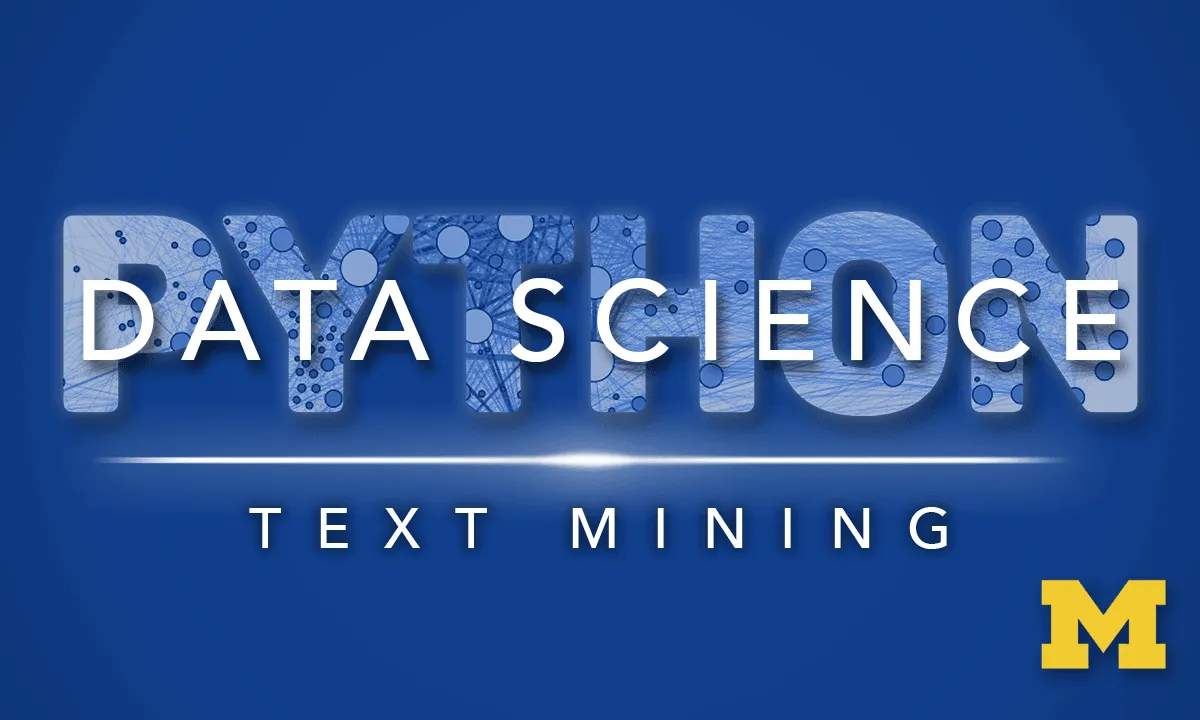
Applied Text Mining in Python 
Learn to manipulate and analyze text data with this comprehensive course on Applied Text Mining in Python. Gain an understanding of how text is handled by Python, and explore the NLTK framework for text manipulation. Discover methods for text classification, regular expressions, cleaning text, and topic modelling. Take the next step in your data science journey with this course. ▼
ADVERTISEMENT
Course Feature
![]() Cost:
Cost:
Free
![]() Provider:
Provider:
Coursera
![]() Certificate:
Certificate:
Paid Certification
![]() Language:
Language:
English
![]() Start Date:
Start Date:
29th May, 2023
Course Overview
❗The content presented here is sourced directly from Coursera platform. For comprehensive course details, including enrollment information, simply click on the 'Go to class' link on our website.
Updated in [June 30th, 2023]
Applied Text Mining in Python is a course designed to introduce learners to the basics of text mining and text manipulation. Learners will gain an understanding of how text is handled by Python, the structure of text both to the machine and to humans, and an overview of the NLTK framework for manipulating text. The course will also cover common manipulation needs, including regular expressions (searching for text), cleaning text, and preparing text for use by machine learning processes. Additionally, learners will apply basic natural language processing methods to text, and demonstrate how text classification is accomplished. Finally, the course will explore more advanced methods for detecting the topics in documents and grouping them by similarity (topic modelling).
This course is intended to be taken after Introduction to Data Science in Python, Applied Plotting, Charting & Data Representation in Python, and Applied Machine Learning in Python.
[Applications]
Upon completion of this course, learners should be able to apply text mining techniques to their own data sets. They should be able to use regular expressions to search for text, clean text, and prepare text for use by machine learning processes. Learners should also be able to apply basic natural language processing methods to text, and demonstrate how text classification is accomplished. Finally, learners should be able to detect topics in documents and group them by similarity (topic modelling).
[Career Paths]
[Recommended Career Path]Data Scientist
Data Scientists are responsible for analyzing large amounts of data and using it to develop insights and solutions to business problems. They use a variety of techniques, such as machine learning, natural language processing, and text mining, to uncover patterns and trends in data. Data Scientists are also responsible for developing and deploying predictive models to help businesses make better decisions.
The demand for Data Scientists is growing rapidly, as businesses increasingly rely on data-driven decision making. As a result, the job market for Data Scientists is expected to continue to grow in the coming years. Data Scientists are also expected to become increasingly specialized, as businesses look for experts in specific areas such as text mining, natural language processing, and machine learning.
[Education Paths]
For learners interested in pursuing a degree in text mining, the recommended educational path is to first obtain a Bachelor's degree in Computer Science, Data Science, or a related field. This degree should include courses in programming, data structures, algorithms, and machine learning. After completing the Bachelor's degree, learners should pursue a Master's degree in Text Mining or Natural Language Processing. This degree should include courses in text mining, natural language processing, and machine learning. Finally, learners should pursue a PhD in Text Mining or Natural Language Processing. This degree should include courses in text mining, natural language processing, machine learning, and research.
The development trend for text mining degrees is to focus on the application of text mining techniques to real-world problems. This includes the use of text mining to analyze large datasets, to identify patterns in text, and to develop predictive models. Additionally, the development trend is to focus on the use of text mining to develop applications for natural language processing, such as chatbots and automated customer service systems. Finally, the development trend is to focus on the use of text mining to develop applications for artificial intelligence, such as automated decision-making systems.
Course Provider

Provider Coursera's Stats at AZClass
Discussion and Reviews
0.0 (Based on 0 reviews)
Explore Similar Online Courses

Mailchimp Masterclass - Learn Customer Journeys

Primavera P6 Foundations Course

Python for Informatics: Exploring Information

Social Network Analysis

Introduction to Systematic Review and Meta-Analysis

The Analytics Edge

DCO042 - Python For Informatics

Causal Diagrams: Draw Your Assumptions Before Your Conclusions

Whole genome sequencing of bacterial genomes - tools and applications

Text Analytics 2: Visualizing Natural Language Processing

Text Analytics 1: Introduction to Natural Language Processing


Start your review of Applied Text Mining in Python